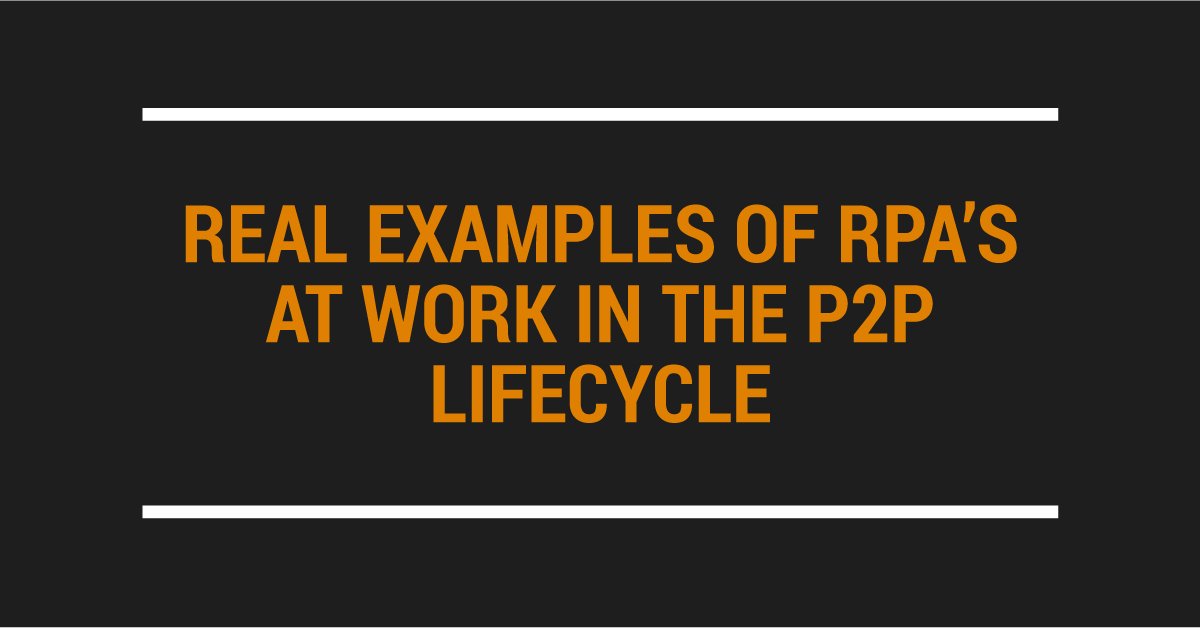Maximizing Savings Opportunities and Procurement's Strategic Value for CPOs
Saving money is not always about pinching pennies: advanced and data-driven insights enable you to identify real cost-saving opportunities, negotiate...

A few years ago, there was a famous Tweet from Box CEO Aaron Levie regarding Uber, which speaks directly to the benefit of P2P’s digital transformation including AI and Robotic Process Automation or “RPA.”
In his Tweet, Levie made the statement “Uber is a $3.5 billion lesson in building for how the world *should* work instead of optimizing for how the world *does* work.”
Putting aside the fact that Uber is still an unprofitable enterprise, the premise of building for the way the world “should work” is no less relevant than if the high-tech transportation company was rolling in ROI dough.
Back in 2014, I wrote an article about the laborious processes associated with invoicing and that a “touch-less approval of electronic invoices is how the world should work.”
I then went on to suggest that the ideal system would be one where upon receipt of an invoice, there would be an automatic validation against internal rules and external data sources (e.g., tax rates), a reconciliation to the ERP system, and finally an approval for payment without human intervention.
Only in rare instances where there were exceptions would someone have to intervene. At the time, research suggested that more than 90 percent of all invoices could be processed and settled in this fashion.
Besides giving personnel the freedom to focus on more strategic areas of the enterprise, the benefits of such a system is the realization of significant savings.
Dr. Michael Lamoureux, the editor-in-chief of Sourcing Innovation, gave a webinar on “How to Make Invoice Automation Pay Off.”
In his 2013 webinar, Lamoureux talked about how Israel Aerospace Industries (IAI) realized savings of 50% in “operational resources” relating to the management of 3,000 suppliers processing over 20,000 documents each month.
From “RFPs through purchase orders and invoices to payment confirmations,” IAI successfully transformed their P2P process.
There are, of course, many other examples of similar results. But here is the telling fact regarding the IAI success; it was six years ago. Why hasn’t procurement and more specifically, procurement’s digital transformation of the P2P process achieved the scale that is commensurate with results such as IAI’s? Why, for example, did a McKinsey survey of 1,650 incumbent companies globally find that only 23 percent had a digital reinvention strategy, and of those just 2 percent involved the supply chain?
In a recently published eBook, I wrote the following: “AI’s transformation of the procurement process will be through a progressive series of strategic and graduating optimization initiatives that move from the automation of tasks, i.e., RPA to a cognitive capability such as predictive analytics that enhances the strategic capability of procurement. At present, we are in the early stages of this process.”
In suggesting the above “path,” RPA is a critical gateway to digital transformation through the automation of tasks that previously necessitated human intervention.
For example, Robotic Process Automation will automatically populate the fields of a purchase request form, including the incorporation of required guidelines to ensure compliance with existing agreements. The distribution of the electronic version of the document to suppliers as part of the RFP process provides further automation. The simplicity of this RPA functionality can extend across the entire P2P process in multiple areas.
I believe that a simplification of the overall understanding of what digital transformation involves
Written by Jon Hansen, exclusively for Procurement Foundry.

Saving money is not always about pinching pennies: advanced and data-driven insights enable you to identify real cost-saving opportunities, negotiate...

The topic of our recent roundtable discussion with a dozen Procurement Foundry community members—exploring potential flaws in procurement incentive...

Every 30 days or so, I get the same alert on my phone—“Your electricity bill is available for viewing.” I take a quick look, make sure nothing seems...